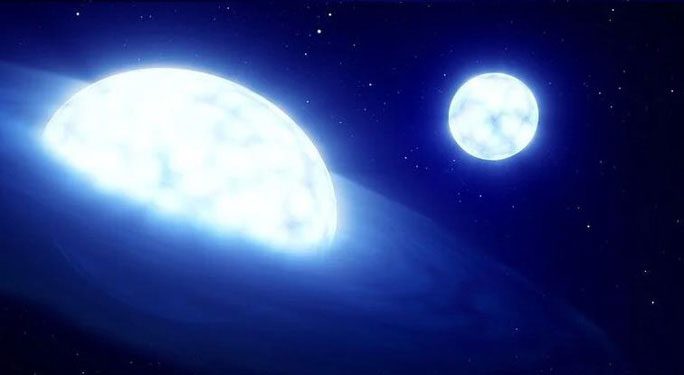HR 6819, also known as Vampire Star, has long been considered the closest black hole to Earth, but it turns out to be something completely different, intriguing and terrifying.
Vampire Star is located 1,120 light-years from Earth and was discovered in the 1980s, initially mistaken for a star, which led to its seemingly “unrelated” name. Subsequent studies have shown that it cannot be a star but rather a material-consuming entity, likely a small black hole.

The closest black hole to Earth is actually a vampire star and its victim – (Photo: ESO)
However, the latest research results from the European Southern Observatory (ESO) indicate that the mass of Vampire Star appears to be much smaller than the mass required to form a black hole. Additionally, it has a smaller, lighter companion that causes the primary object to shake regularly.
Two different scenarios have been proposed for what is referred to as Vampire Star. The first is that it is a system of three objects consisting of an invisible black hole, a dim, inhomogeneous star, and a bright primary star, which is what we see. The second scenario suggests that it could be two interacting objects. If this second scenario is true, the two objects must be very close together, making it unlikely that one is a black hole!
According to Science Alert, results from observations using the Very Large Telescope of ESO with a special light comparison tool suggest that it must be a binary star system, but not a typical binary star.
They are in a phase where one of the two objects has transformed into a vampire, having nearly drained the atmosphere of its companion star. A star can become a vampire when it runs out of energy and transforms into a “zombie” of the universe – a white dwarf.
In other words, Vampire Star is indeed a star as previously thought decades ago, and it is a vampire star living alongside its close victim.
This research was recently published in Astronomy & Astrophysics.





















































